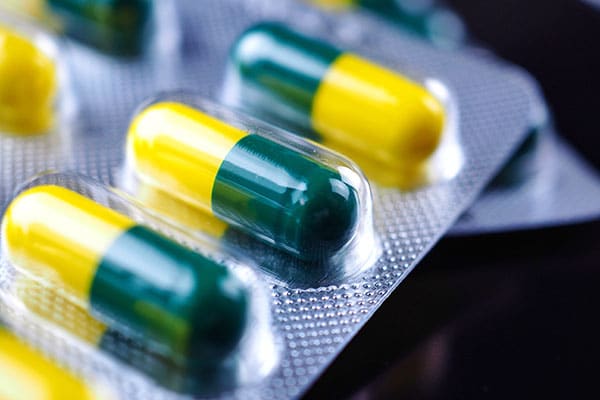Tramadol (marketed as Ultram) is an opioid pain medication that has been available in the United States for decades and is prescribed to tens of thousands of Americans every year for moderate to moderately severe pain.
Like with other opioid pain medications, however, many people who start off using tramadol for legitimate uses eventually find themselves addicted. And because of the different ways the drug can be metabolized by the body, some people can quickly become hooked and experience extremely difficult physical, mental, and emotional side effects when they try to stop taking tramadol.
How does tramadol work?
Like all opioid pain medications, tramadol acts on opioid receptors in the brain, which is the primary source of its pain-relieving ability and, at higher doses, the euphoric effects that abusers seek.
Unlike most opioids, however, tramadol has another effect: it raises levels of the neurotransmitters serotonin and norepinephrine in the brain in ways similar to antidepressant drugs such as venlafaxine and duloxetine (Effexor and Cymbalta). This increase in serotonin and norepinephrine in the brain may lead to feelings of euphoria and well-being, and for some individuals these pleasant symptoms serve to reinforce the need for continued tramadol use.
Tramadol withdrawal – Typical vs. Atypical Symptoms of withdrawal
Because of these two mechanisms of action, users who develop a tramadol addiction often experience typical symptoms of opioid withdrawal as well as what are referred to as atypical symptoms.
Typical opioid withdrawal symptoms
Typical withdrawal symptoms arise because as a person consumes the drug, they develop a tolerance over time, meaning they need to consume more of the drug to get the desired effects. At the same time, the body becomes physically dependent on the medication, and the person will begin to experience withdrawal symptoms when it isn’t in their system.
These withdrawal symptoms and their severity depend on the amount of time the person used the drug and the typical dose taken, and they generally fall into two categories: early and late.
Early opioid withdrawal symptoms occur within a few hours of the last dose, and include:
- Runny nose
- Sweating
- Tearing up
- Yawning
- Muscle and body aches
- Trouble sleeping and/or insomnia
- Anxiety
- Restlessness
- Agitation
- Racing heart rate
- Hypertension
- Fast breathing
Late opioid withdrawal symptoms occur a day or two after the last dose, and include:
- Chills and goosebumps
- Stomach pain and cramping
- Diarrhea
- Vomiting
- Loss of appetite
- Pupil dilation
- Difficulties concentrating or thinking clearly
- Irritability
- Drug cravings
Atypical opioid withdrawal symptoms

Because of the way tramadol affects the neurotransmitters serotonin and norepinephrine, which are responsible for stabilizing mood and bringing about feelings of well-being and happiness, some users will also experience another set of psychological symptoms that aren’t seen in withdrawal from other opioid drugs like heroin or hydrocodone.
These are referred to as atypical opioid withdrawal symptoms, which may include:
- Hallucinations
- Intense paranoia
- High anxiety and onset of panic disorder
- Confusion and disorientation
- Depersonalization (feelings of being detached or outside of one’s body)
- Unusual sensory experiences, such as numbness and tingling in the extremities
These atypical symptoms might not be physically dangerous in and of themselves, but they may lead people to dangerous situations. Those experiencing visual or auditory hallucinations, paranoia, and delusions often make bizarre or otherwise poor choices, which can put them and others at risk.
Treating tramadol addiction & withdrawal safely
As mentioned earlier, tramadol is not only difficult to stop taking once a person becomes physically and psychologically dependent – it can also be dangerous without professional medical supervision and assistance.
As is the case with other opioids, tramadol withdrawal can be safely managed through supervised medical detox (also known as withdrawal stabilization). This allows patients to be closely monitored by trained medical professionals who can prescribe anti-addiction medications to relieve many of the unpleasant physical and emotional symptoms, as well as to reduce the intense cravings for the drug.
Medication management has proven to be an effective tool that safely stabilizes patients and allows them to fully participate in a comprehensive program. From here, patients should be introduced to therapeutic techniques and tools to help them better control things like their mood, stress, and drug cravings as they slowly taper off the maintenance medication.
It’s important to recognize that the withdrawal stabilization phase is NOT treatment in and of itself – it should only serve to remove the substance from the body so that the actual treatment phase can begin.
Medications for tramadol addiction and withdrawal
Enterhealth utilizes two FDA-approved medications to treat patients for typical opioid withdrawal symptoms: Suboxone (buprenorphine with naloxone) and Vivitrol (long-acting naltrexone). These medications work by binding to the same opioid receptors as the offending substances without producing the same euphoria and sedative effects.
This not only reduces the unpleasant withdrawal symptoms, it also has the added benefit of blocking other opioids from interacting with these receptors, meaning if a person relapses with their drug of abuse, they will not experience the “high” they crave.
Depending on the unique needs of each patient, they may also be prescribed other medications or supplements to target the atypical symptoms of tramadol withdrawal, including antidepressants.
However, caution must be taken to avoid a complication called serotonin syndrome, which is a life-threatening condition that can result from too much serotonin in the brain.
Some examples of medications that raise serotonin levels include:
- SSRISs or SNRIs
- Dextromethorphan (DXM – a common ingredient in over-the-counter cough syrups)
- St. John’s Wort
- Triptan migraine medications
- 5-HTP supplements
Due to the risks posed by serotonin syndrome, taking medications to increase serotonin levels should only be considered under a doctor’s observation and guidance of trained medical professionals.
Tramadol addiction treatment at Enterhealth
Through both our inpatient and outpatient rehab centers, Enterhealth offers an evidence-based treatment approach that combines state-of-the-art physical and psychological evaluations, supervised medical detox using anti-addiction medications, and time-tested behavioral therapies.
Designed and administered by experienced, board-certified addiction psychiatrists, physicians and other experts, our approach is proven to offer patients the best chance to successfully recover from tramadol addiction.
If you or someone you love needs help, call us today at 800.388.4601 or visit https://enterhealth.com/contact-us/.




